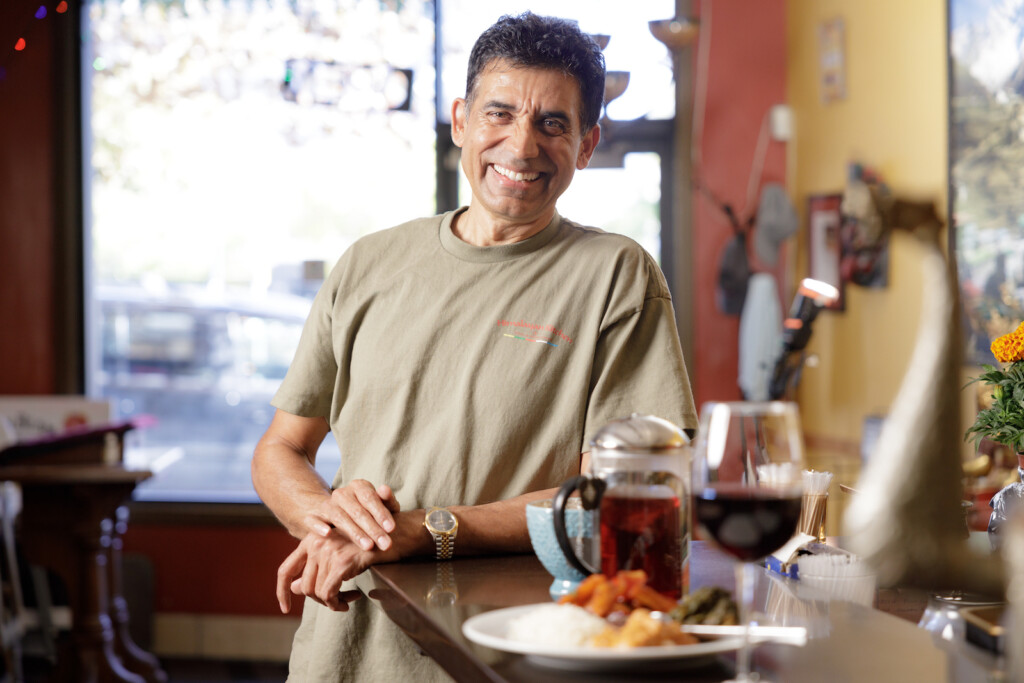Community Supported Agriculture or CSAs have caught on big among Salt Lake City localvores.
“It is absolutely worth the cost!” Joanna Mull is talking about the Community Supported Agriculture (CSA) program of which she is an enthusiastic participant.
Joanna is trying the CSA program for the first time this year and is signed up with 3 Squares Produce. When she picks up her weekly food bag she said, “It is fun to pull everything out of the bag and see what I have for the week.” She will find a healthy mix of farm-fresh fruits, vegetables and herbs. She doesn’t know from week to week what her allotment will be, but the unexpected items make CSA a true local-vore eating adventure.

More and more people are wishing they could buy local and eat fresh. Supermarket chains try to offer homegrown produce in season. During the summer, farmer’s markets spring up around the valley, but what if you want a weekly infusion of farm fresh, locally grown, healthy food?
CSA is increasingly the answer. It is a program that matches farmers and consumers to the benefit of all. Consumers are able to buy local, fresh produce and farmers can get a much-
needed infusion of starting cash by offering their produce for a paid up-front price. Most farmers offer various packages, depending on the season. Some farms with green houses even offer a winter season package.
About 43 farms participate in the program. After signing up with one of the farm programs for a share, or in some cases a half share, a weekly box of fresh produce is delivered to a central location for the buyer to pick up and enjoy.
The spring season lasts about six weeks and a delivery might include salad greens, radishes, early rhubarb, chard, kale, sprouts, peas and herbs. If the farmer is having a short week or not enough produce ready to harvest, they may supplement the week’s delivery with items from other local farms or with value added items such as eggs, dairy and local bakery items. Their goal is to keep everything they deliver local.
The summer season for most farms runs from mid-June to mid-October. Summer offers a huge variety of produce including squash, peppers, tomatoes, sweet corn, eggplant, cucumbers and green beans. Tree fruits – apples, apricots, peaches, pears and cherries – are available as they come into season.
Jackie Rogers enrolled in the CSA program two years ago before she moved to Tucson. Now that she is back, she signed up again. “It’s kind of like Christmas every week and we get stuff we’ve never heard of.” She enjoys sampling new produce and learning how she can adapt her household cooking to the growing season.
According to Jack Wilbur, a coordinator for the CSA program and a farmer participant, the program has been in Utah for about 10 years and in other parts of the country for about 15 years. “This year,” he said, “43 farms are participating compared to 35 last year and we expect 4,000 people to sign up for shares.” Wilbur described the CSA farmers as a “loose association or gathering of farmers” joined together to boost their cause and share advertising.
Wilbur says that the program has allowed family farms to become more profitable. “With the payment up front, the farmer has income when the expenses are the highest – at the beginning of the growing season.”
The farms in the CSA program vary in size, produce and farming methods. Each farm has its own terms and benefits.In February or early March the CSA organization holds open houses for consumers to meet the farmers and sign up with the ones offering what they seek. It also allows customers to meet the men and women who are growing their food.
Some of the the farmers are very innovative. Adam and Dianna Diehl run Adam’s Heirlooms out of Midvale. They have a backyard garden where they plant tomatoes, garlic, eggplant, potatoes, onions and greens. Since their space is limited, they also use three other backyard gardens near their home. In exchange for using the gardens they offer the homeowners a share and do cleanup and improvements to the space they are using.
With limited space they do what Adam calls, “edible landscaping.” Almost everything in their yard produces food as well as being aesthetically pleasing. They use strictly heirloom plants, all dating from before 1900, and their love of gardening grew out of a love for food history. This is their first year participating as producers, but Dianna said, “We are loving it.”
Whether you are in the market for adventure and really want to find out how a kohlrabi tastes, or you just want fresh tomatoes every week, Community Supported Agriculture just might fill your plate.
More information on participating farms, visit csautah.org






